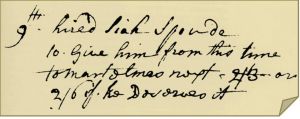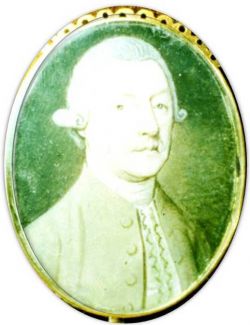- History
- Pottery
- Industry
Josiah Spode I:Early Pottery Experience
 When Josiah Spode began to work for Thomas Whieldon at the age of 16, it was likely that he already had some pottery experience. It was usual for boys to begin to learn their trade from about the age of seven. Whieldon's offer of a wage of "2 shillings and 3 pence a week or 2 shillings and 6 pence if he deserved it," was more than a child's but less than a qualified journeyman might expect to make. It suggests that Spode came with some pottery-making skills and potential to make masterpotter.
When Josiah Spode began to work for Thomas Whieldon at the age of 16, it was likely that he already had some pottery experience. It was usual for boys to begin to learn their trade from about the age of seven. Whieldon's offer of a wage of "2 shillings and 3 pence a week or 2 shillings and 6 pence if he deserved it," was more than a child's but less than a qualified journeyman might expect to make. It suggests that Spode came with some pottery-making skills and potential to make masterpotter.
In working for Whieldon, Spode was training with the most eminent of Staffordshire’s mid-18th century manufacturers. From fairly humble beginnings Whieldon established a large and successful business. He owned not only a pottery but also other properties including extensive lands, houses large and small, mills, and canal wharves. A number of young men who worked for, and with, Whieldon subsequently enjoyed later success. Josiah Wedgwood, Whieldon’s junior partner between 1754 and 1759, is perhaps the best known but he was not the only one to achieve fame. Josiah Spode also enjoyed an international reputation.
Whieldon recorded hiring Spode in his memorandum book on April 9, 1749:
Hired Siah Spoade, to give him from
this time to Martelmas next 2s. 3d
or 2s.6d. if he Deserves it. £ s d
2nd year 2 9
3rd year 3 3
Paid in full earnest 1 0
Memorandum book entries between Whieldon and Spode continued until 1754 when Spode’s wages reached 7 shillings and 6 pence a week and his earnest was a generous £1 11s 6d. The money would have been
particularly useful at that time, as in 1754 Josiah married Ellen Findlay. Ellen was 7 or 8 years older than her husband, and although she was unable to sign her own name at the time of the marriage, she was competent enough to build up a haberdashery business while caring for their family of eight children. The hard-working, focused couple gradually began to establish themselves. In 1758 they purchased their own house on a piece of property on the North side of Church Street, the main street running through Stoke-upon-Trent.


